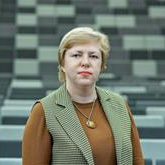Application of Emerging Techniques and Sustainable Quality Management in the Architectural, Engineering, Construction (AEC) and Facilities Management Industries
A special issue of Sustainability (ISSN 2071-1050). This special issue belongs to the section "Green Building".
Deadline for manuscript submissions: 31 March 2026 | Viewed by 2941
Special Issue Editor
Interests: facilities management; BIM applications in facilities management; quality management systems; real estate management; new technologies in facilities management
Special Issues, Collections and Topics in MDPI journals
Special Issue Information
Dear Colleagues,
The numerous benefits offered by green buildings have led to an increase in their construction. In parallel, various artificial intelligence (AI) and emerging techniques have been recognized as relevant for these types of buildings to rationalize, optimize, and innovate their operation (Rodríguez-Gracia et al., 2023). Technology is the key to successful projects that advance green building. Various green building technologies with temperature reduction, wastewater systems, energy efficiency, photovoltaic-powered cooling systems, etc., can be adopted in green building projects (Patil et al., 2022).
This Special Issue aims to collate new ideas of research into green buildings and the application of emerging techniques and sustainable quality management in the architectural, engineering, construction (AEC), and facilities management industries. Also, this Special Issue aims to provide an advanced forum for studies related to green buildings and emerging techniques.
In this Special Issue, original research articles and reviews are welcome.
Research areas may include (but are not limited to) the following:
- Green buildings and application of emerging techniques;
- Sustainable quality management;
- Emerging techniques and sustainable quality management in the architectural, engineering, construction (AEC), and facilities management industries;
- Sustainability in architectural, engineering, construction (AEC), and facilities management industries;
- Green construction;
- Green buildings and facilities management.
I look forward to receiving your contributions.
Dr. Natalija Lepkova
Guest Editor
Manuscript Submission Information
Manuscripts should be submitted online at www.mdpi.com by registering and logging in to this website. Once you are registered, click here to go to the submission form. Manuscripts can be submitted until the deadline. All submissions that pass pre-check are peer-reviewed. Accepted papers will be published continuously in the journal (as soon as accepted) and will be listed together on the special issue website. Research articles, review articles as well as short communications are invited. For planned papers, a title and short abstract (about 100 words) can be sent to the Editorial Office for announcement on this website.
Submitted manuscripts should not have been published previously, nor be under consideration for publication elsewhere (except conference proceedings papers). All manuscripts are thoroughly refereed through a single-blind peer-review process. A guide for authors and other relevant information for submission of manuscripts is available on the Instructions for Authors page. Sustainability is an international peer-reviewed open access semimonthly journal published by MDPI.
Please visit the Instructions for Authors page before submitting a manuscript. The Article Processing Charge (APC) for publication in this open access journal is 2400 CHF (Swiss Francs). Submitted papers should be well formatted and use good English. Authors may use MDPI's English editing service prior to publication or during author revisions.
Keywords
- green buildings
- sustainable quality management
- architecture
- engineering
- construction
- facilities management
- emerging techniques
- BIM
- artificial intelligence
Benefits of Publishing in a Special Issue
- Ease of navigation: Grouping papers by topic helps scholars navigate broad scope journals more efficiently.
- Greater discoverability: Special Issues support the reach and impact of scientific research. Articles in Special Issues are more discoverable and cited more frequently.
- Expansion of research network: Special Issues facilitate connections among authors, fostering scientific collaborations.
- External promotion: Articles in Special Issues are often promoted through the journal's social media, increasing their visibility.
- Reprint: MDPI Books provides the opportunity to republish successful Special Issues in book format, both online and in print.
Further information on MDPI's Special Issue policies can be found here.





